Bennerley Viaduct
Bennerley Viaduct is a former railway viaduct that is now used as a public footway and cycleway located near Ilkeston. It once carried the Derbyshire and Staffordshire extension of the Great Northern Railway over the Erewash Valley. After lying in a state of disrepair for 54 years, the viaduct was restored and reopened to the public despite multiple demolition attempts. Primarily constructed of wrought iron, Bennerley Viaduct is one of two lattice truss girder bridges left in the UK and is affectionately known as ‘The Iron Giant’.

Key info
| Location | Ilkeston |
| County | Nottinghamshire |
| Completed | 1877 |
| Engineers | Richard Johnson & Samuel Abbott |
| Maintained by | Sustrans |
| Heritage category | Listed Building Grade II* |
Visiting guide
Open 24 / 7
Free entry
Free street parking
What can I expect when visiting Bennerley Viaduct?
You can start your visit from multiple locations; however, in this guide, we will begin at the small layby car park off the A6096 to the north-east of the viaduct. Turn left at the gate and follow the remains of the Nottingham Canal.

Further down the towpath, you will see the viewing platform that offers a perfect vista of the Bennerley Viaduct. There is also a cast iron information board detailing the history and architecture of the viaduct.
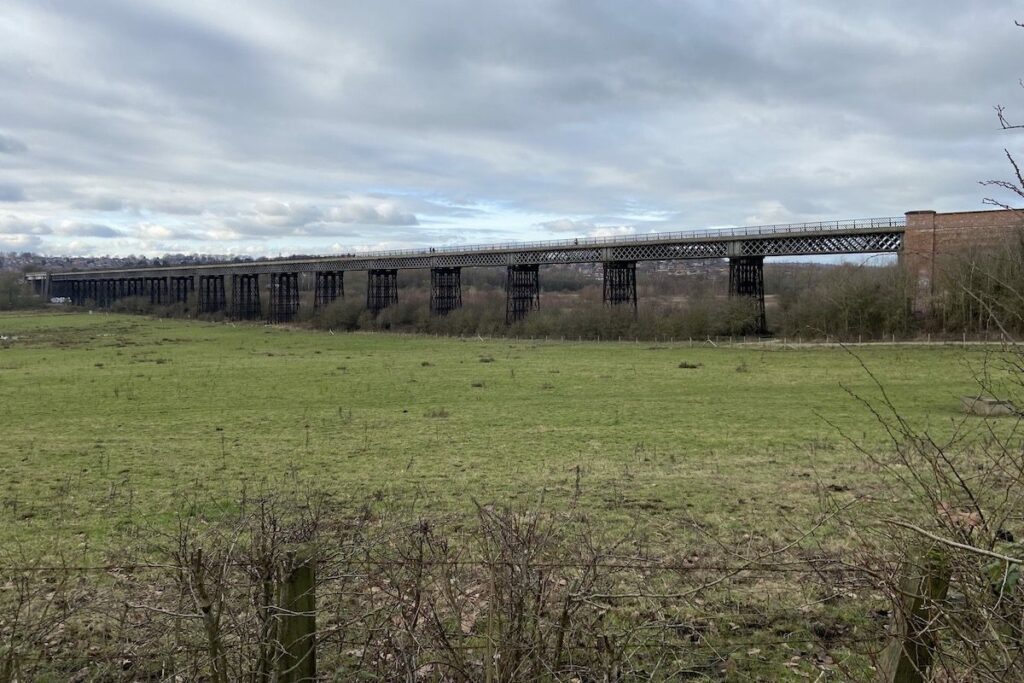
Continue along the canal until you reach Newtons Lane then turn right. Follow the lane and take caution when the pavement runs out. You will arrive at a bridge crossing the Erewash Canal, turn right and join the towpath before passing Barker’s Lock (number 70).

The canal was a busy route with narrowboats transporting coal from the collieries of Nottinghamshire and Derbyshire to the River Trent. Today, it is a more peaceful environment that is popular with fishers.
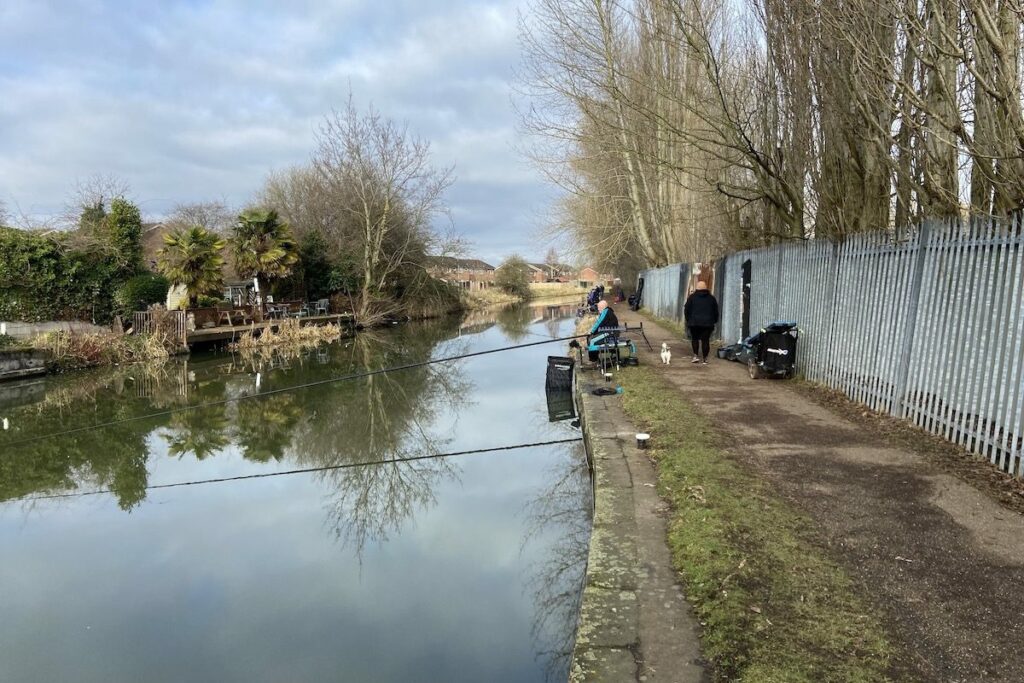
Head past Stenson’s Lock (number 71) and then you will see a path on your right leading to the south-west approach to the viaduct. The viaduct would have originally crossed the canal straight ahead; however, all traces of this bridge have vanished except the embankment to your right, which has now been landscaped to provide access.
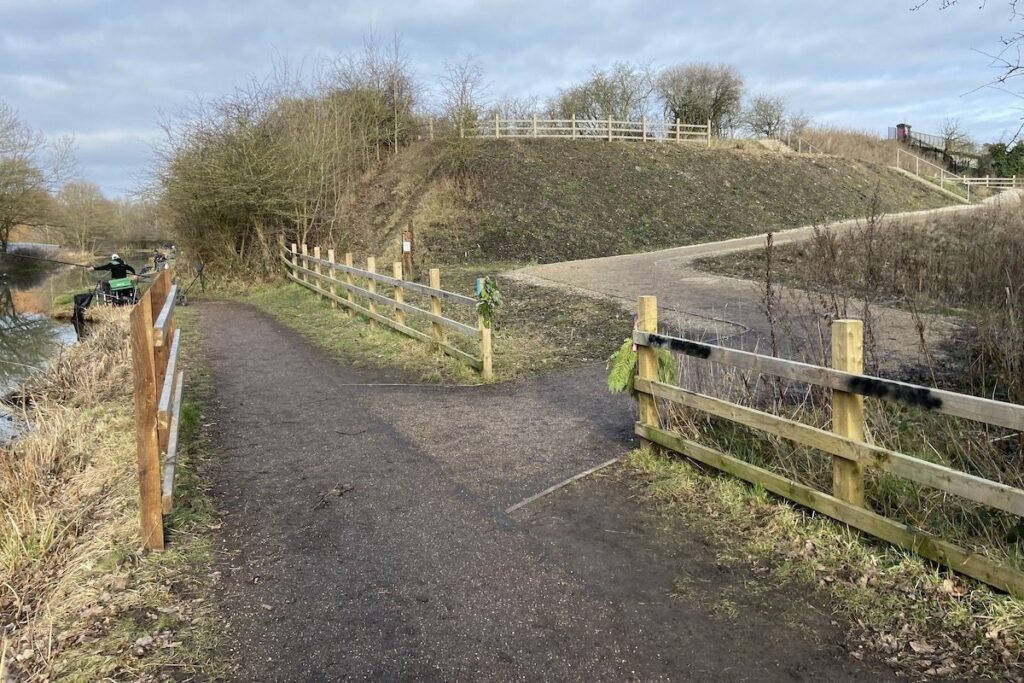
Head up the winding path to the viaduct and you will be presented with a view of its gigantic length. Let’s go!
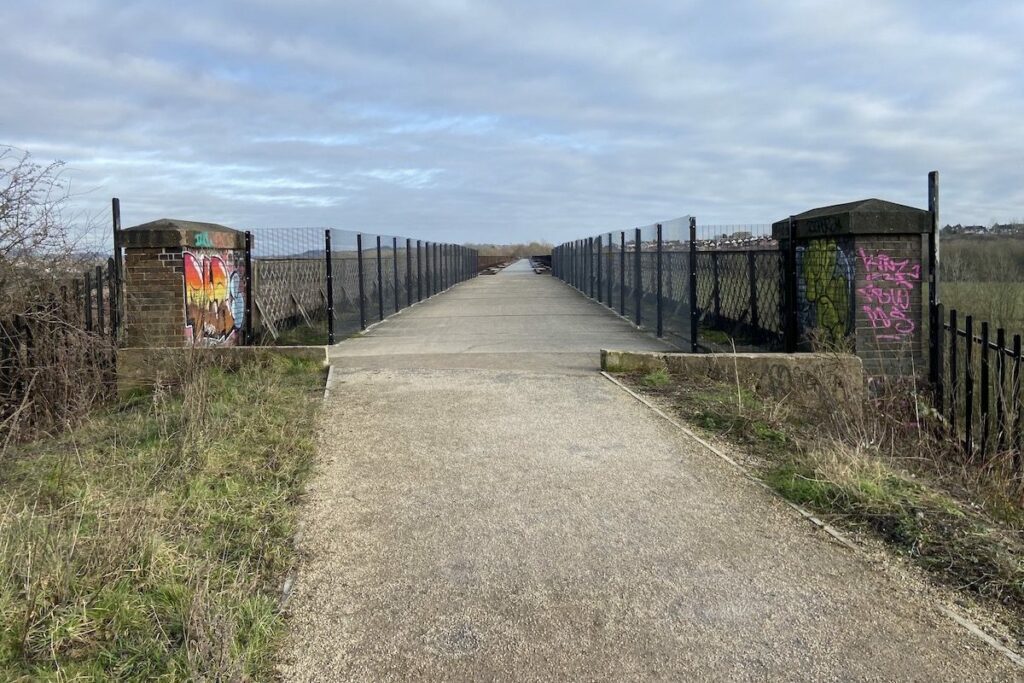
The first section of the viaduct is a bridge with iron girders supported on brick piers that crosses the Erewash Valley railway line that is still in use. It has a concrete deck, and you can still see the holes that would have been used to secure the attachment of railway sleepers.

Continue long the viaduct and look to your left for a view of the site where the Bennerley Ironworks existed on the east bank of the River Erewash. Can you spot the small bridge crossing the river in the distance that carried the freight sidings into the ironworks?
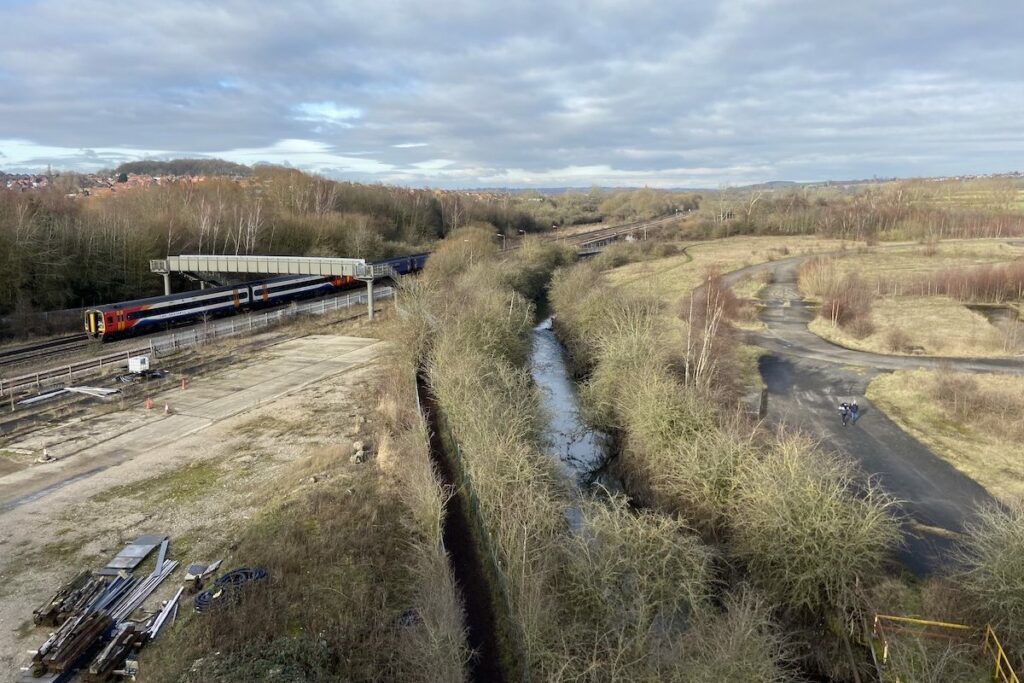
You will now head across the wrought iron viaduct where a new pedestrian friendly deck has been installed; however, gaps have been left either side providing visitors with a view of the corrugated surface containing girders that brace the Warren Lattice trusses underneath. Notice the wrought iron lattice parapets running along the edge.
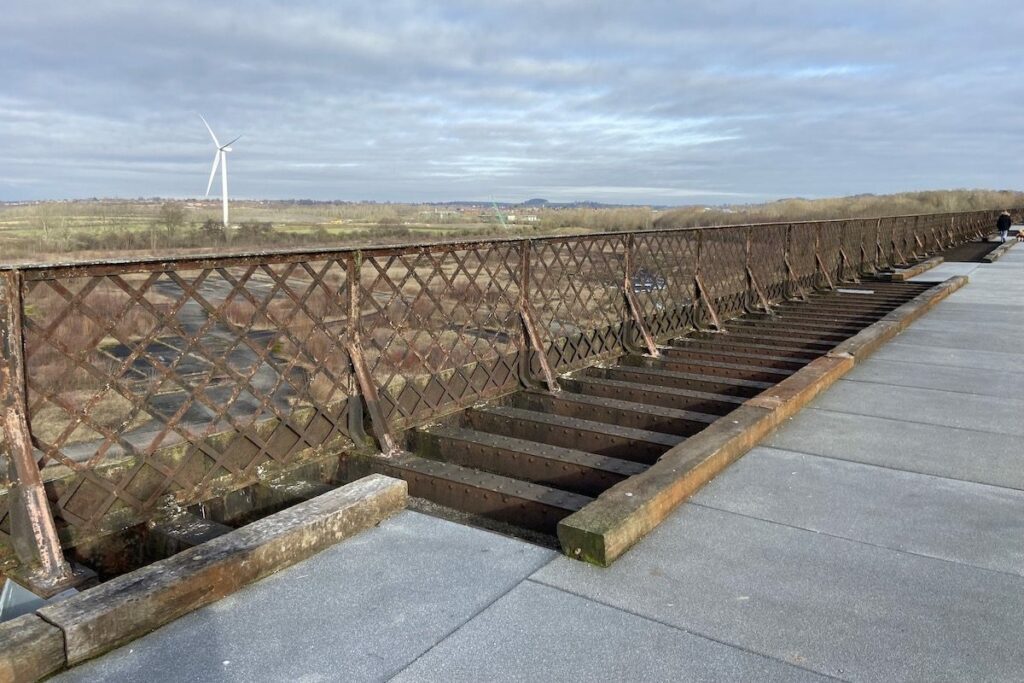
Closer inspection of the corrugated surface reveals the ravages of time. Although the viaduct is safe to walk on today, it certainly will require more maintenance to ensure it can be enjoyed for generations to come.

Continue along the viaduct to the north-east approach. Notice the new capstones that were made during the viaduct’s restoration. They match their original counterparts, which is a delightful bit of detail.
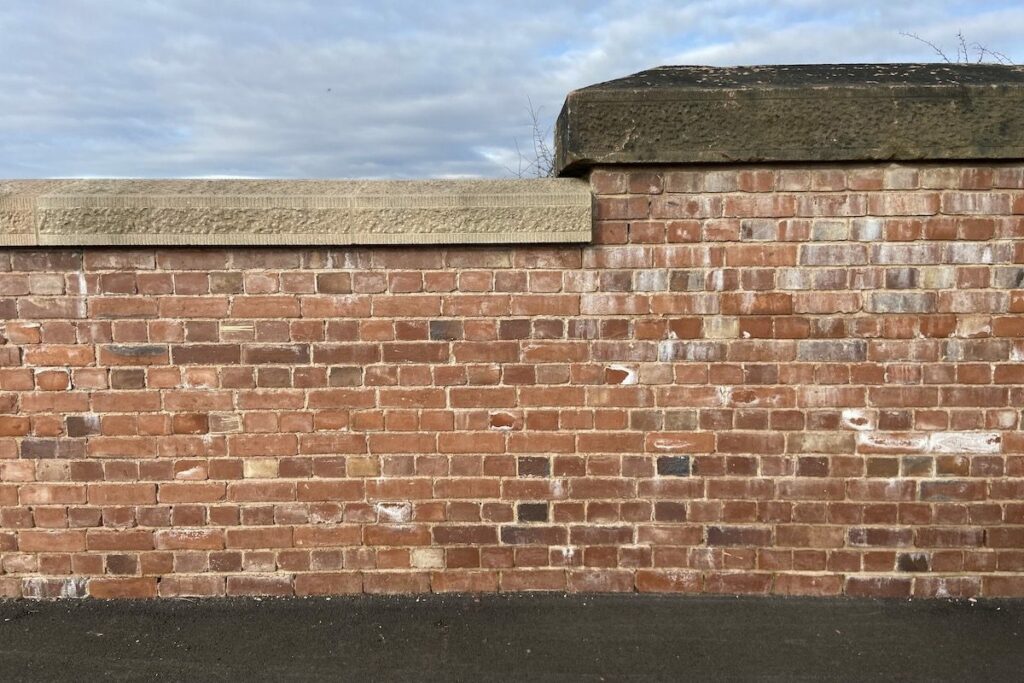
Head down the stairs and then follow the path round to the right of the embankment that leads under the viaduct. A sign marks the gated entrance.
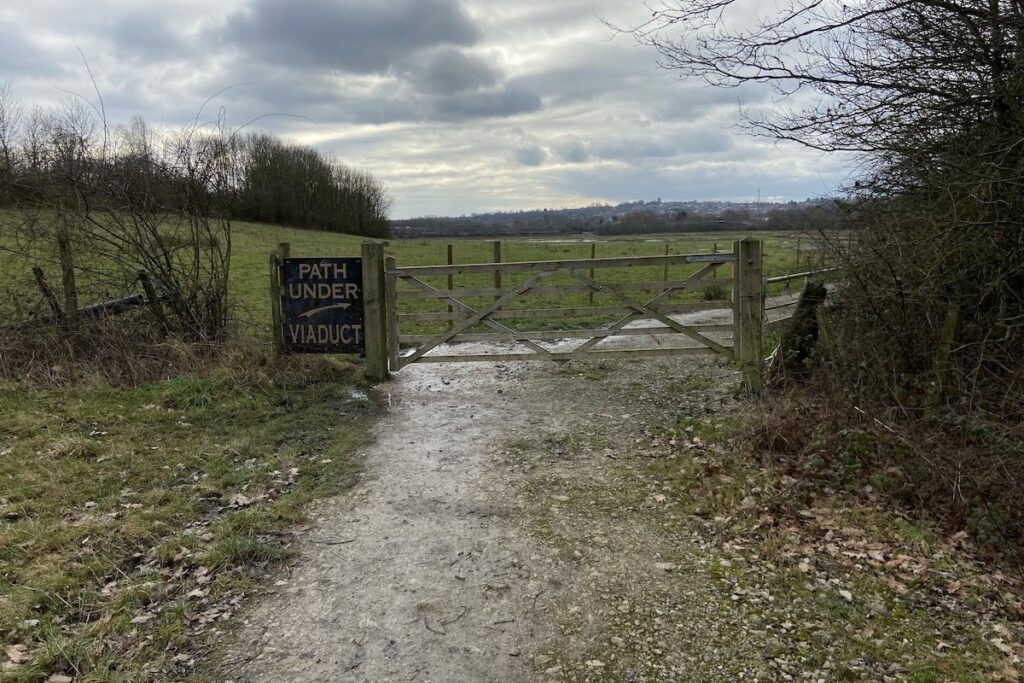
The path will lead you under the viaduct where you can inspect the wrought iron piers, which are attached to brick foundations with a concrete base.
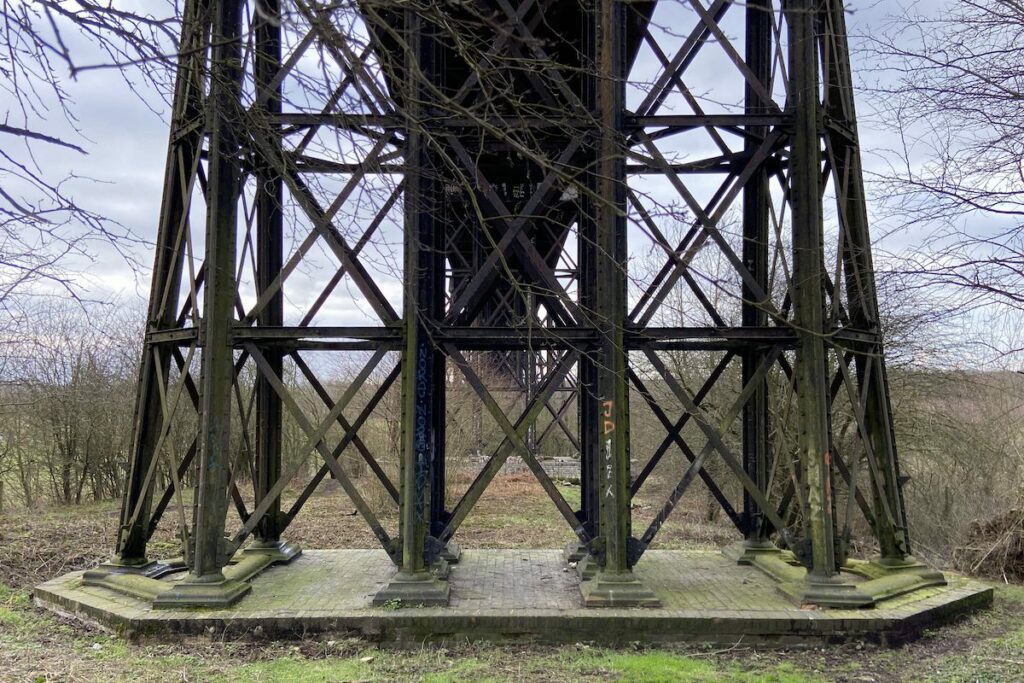
Closer inspection of the piers reveals the intricate nature of how the is fixed together with rivets and cotter pins. It’s worth noting the viaduct can slightly move to compensate for the unstable ground conditions of the Erewash Valley. This was the reason why wrought iron was chosen as the principal construction material because it’s lighter and more flexible than a traditional stone or brick viaduct.
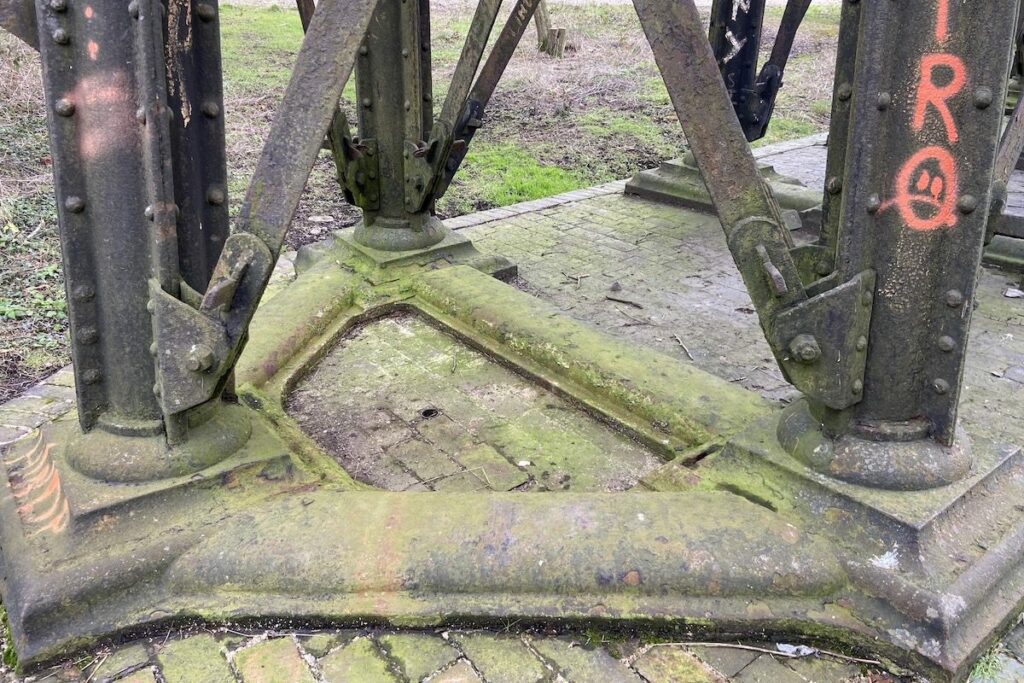
You now have the option to continue walking under the viaduct and exploring the Erewash Valley or you can head back up the path and continue to our starting position.
How long does it take to visit Bennerley Viaduct?
It will take you roughly 2 hours to complete the 2-mile visiting guide detailed above. Allow more time if you wish to extend your visit by exploring the Erewash Valley.
Is Bennerley Viaduct suitable for a picnic?
Bennerley Viaduct crosses the Erewash Valley, a green and open area, which is suitable for a picnic. You may wish to bring sandwiches and flask of tea to enjoy on the viaduct as an alternative.
How do I get to Bennerley Viaduct?
If arriving by car, there is a small layby car park off the A6096 to the north-east of the viaduct. Ilkeston railway station is over a mile away from the viaduct to the south. If arriving by train. Walk west down Coronation Street then join the canal towpath and head north to the viaduct.
If arriving by bus, aim to catch a service that travels along Awsworth Road, which crosses the Erewash Canal, which you can use to travel up the viaduct.
History of Bennerley Viaduct
The viaduct carried a railway line that ran from Stafford to Nottingham via Derby. The line was constructed by the Great Northern Railway to compete with the Midland Railway who had a monopoly on carrying freight from Derby particularly coal from the collieries of Derbyshire and Nottinghamshire including the Erewash Valley.
The Erewash Valley ground is marshy and unstable thanks to extensive coal mining; therefore, the engineers tasked with building the railway opted for constructing a viaduct of wrought iron because it was cheaper and lighter than a stone or brick structure and faith in cast iron had been shattered following the collapse of the Dee Bridge, which resulted in five fatalities.
1877 – The viaduct is completed to the designs of Resident Engineer Samuel Abbott and Chief Engineer Richard Johnson. The wrought iron latticework design was light in weight, could be assembled quickly, and allowed flexibility in movement to compensate for the unstable ground. The ironwork was prefabricated by Eastwood, Swingler & Co. of Derby and then assembled on site by the railway construction firm Benton and Woodiwiss.
1877 – The viaduct is opened to traffic and the line became very profitable. Further extensions were constructed into the heart of the local coalfields. The line also opened up access to Skegness as a prime choice of holiday resort by the residents of Ilkeston.
1916 – The viaduct narrowly misses damage during a bomb attack delivered by a German L20 zeppelin. The railway line beneath the viaduct was bombed.
1948 – The railways are nationalised, and ownership of the viaduct is transferred to British Rail.
1963 – A report by Dr Beeching recommends closure of the line due to declining use.
1964 – The last passenger service crosses the viaduct.
1968 – The last freight service crosses the viaduct. The first demolition attempt of the viaduct failed because the costs were deemed too high.
1974 – The viaduct was designated as a listed structure, which offered some protection from the wrecking ball.
1975 – Permission for a second demolition attempt was applied by British Rail; however, it was refused by Broxtowe and Erewash Borough Councils.
1980 – A public enquiry was held on the future of the viaduct. Local demand ensured demolition was held off. A preservation trust was established and plans to reopen the Bennerley Viaduct as a cycleway were proposed [1].
1998 – The railways are privatised once again and ownership of the viaduct is transferred to Railway Path Ltd, a sister company of Sustrans.
2022 – Bennerley Viaduct reopens to the public after more than 50 years of closure. The viaduct was restored using £1.7M of funding, which was provided by the Railway Heritage Trust, Railway Paths Ltd, and local donations. The restoration programme included installed a new pedestrian and cycle friendly deck across the corrugated viaduct surface [2].
Architecture & dimensions
Bennerley Viaduct is constructed from wrought iron with concrete pier foundations topped with stone and red and blue bricks. The viaduct is formed of sixteen lattice deck spans, carried on fifteen evenly spaced latticework piers. The ends of the spans at each end of the wrought-iron viaduct are supported on brick support structures. These form or formed parts of structures attached to the viaduct, and to embankments forming sections of the raised railway spanning the Erewash Valley.
The west end of the viaduct is supported by a tall blue brick pier with battered outer walls and brick parapets (the pier also forms part of the east end of the railway bridge to the west of the iron viaduct, which is not included in the designation). The east end of the viaduct is carried on a red-brick abutment. This was originally attached to an embanked section of the line, the stub of which survives [3].
How long is Bennerley Viaduct?
Bennerley Viaduct is 433 m (1420 ft) long.
How many spans does Bennerley Viaduct have?
Bennerley Viaduct has 16 spans. A further 3 spans exist as part of the bridge crossing the Erewash Valley railway line to the west; however, this is not technically part of the viaduct because the bridge is a different structure.
How high is Bennerley Viaduct?
Bennerley Viaduct crosses the Erewash Valley at a height of 18 m (≈60 m)
Sources
- Viaduct information boards.
- (2022) ‘Bennerley rail viaduct opens for pedestrians and cyclists after half-century of disrepair’, New Civil Engineer, 14 January. Available at: https://www.newcivilengineer.com/latest/bennerley-rail-viaduct-opens-for-pedestrians-and-cyclists-after-half-century-of-disrepair-14-01-2022/ (Accessed: 26 March 2023).
- Historic England (2020) Bennerley Viaduct. Available at: https://historicengland.org.uk/listing/the-list/list-entry/1140437 (Accessed: 26 March 2023).

 Stourport Bridge
Stourport Bridge